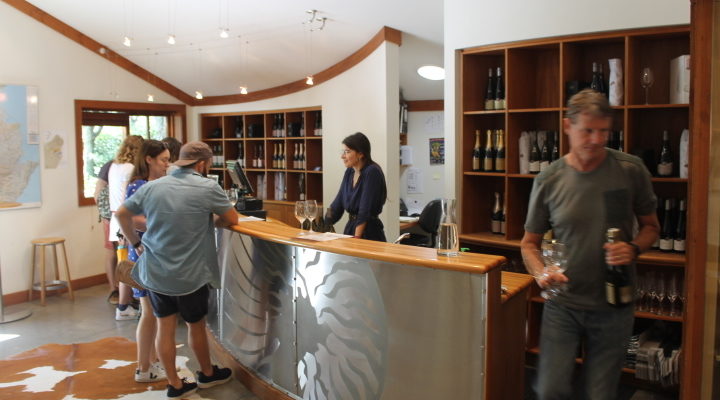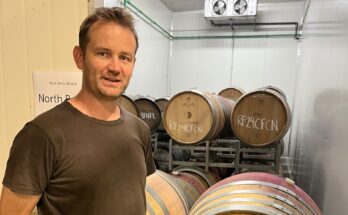WineFolio’s most popular series, where we chat to the best of New Zealand’s winemaking talent. The day after the 2020 Vintage kicked off, we walk and talk with Clive Jones.
WineFolio: Can you tell us a bit of background and history on Nautilus?
Clive Jones: Nautilus was established in 1985, back then there were about 80 wineries in New Zealand, now there’s about 700. So we were part of not the first wave, but the second wave into Marlborough. The ‘70s saw the first pioneers come in, and then the ‘80s a few other businesses.
We are owned by the Hill-Smith family, based in the Barossa Valley and run the Yalumba wine business. They are the oldest family owned and run wine business in Australia. Nautilus was Robert’s idea back in the ‘80s, when he was over here selling Australian wine and saw potential in the New Zealand wine industry.
He created the Nautilus brand, established a relationship with some growers to source some fruit; and then bought into the Rapaura Vintners contract winemaking business.
Then we invested in vineyards and eventually built this winery which is our Pinot Cellar, which we built in 2000. We did that for two reasons – one was we got serious about Pinot. At the time the wines were made in a contract winemaking facility that was really set up for Sauvignon Blanc, and with Pinot we take a bit of a different approach. And also to get a Cellar Door onto Rapaura Road.
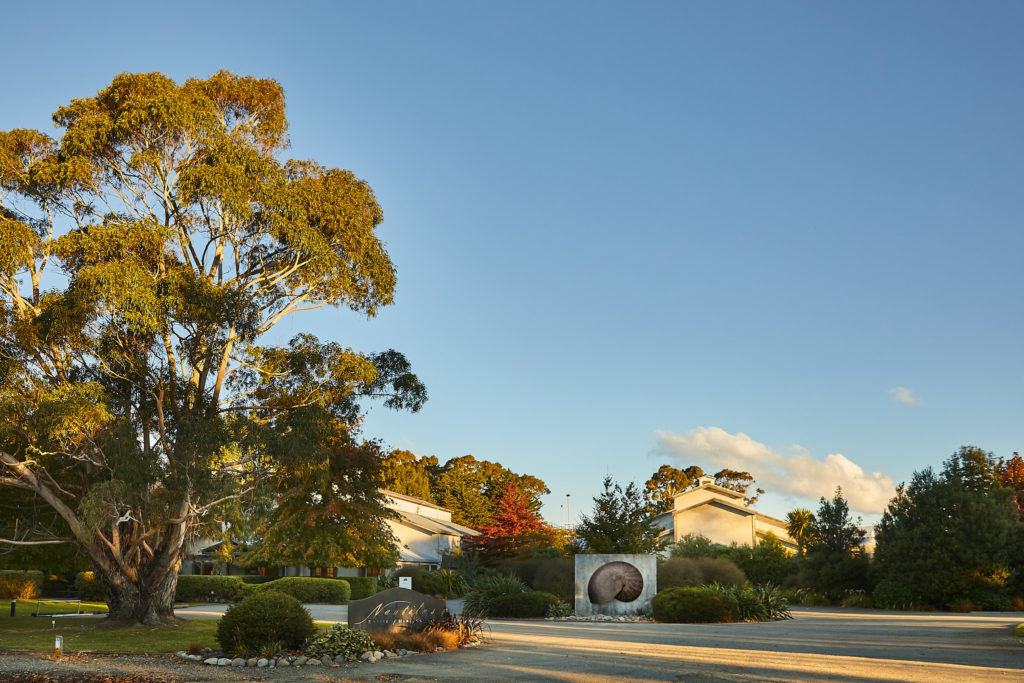
WF: So, you take Pinot Noir quite seriously, as well as being known for your Sauvignon Blanc and bubbles?
CJ: At the time we claimed it was the first specialist Pinot Noir cellar in the southern hemisphere. Then we sold out of the contract winery and built the white wine facility in 2006 – so we have separate red wine and white winemaking facilities. They’re in separate buildings but obviously there’s a certain amount of synergy between them.
In the late 90s we were certainly one of the first companies that wanted to look at taking Pinot from something that was relatively experimental and done on a very small basis, to deciding that we wanted to make a reasonable quantity of good Pinot. We’re a medium sized winery by New Zealand standards – we do about 100,000 cases across three brands – Nautilus, Opawa and Twin Islands. And Nautilus is somewhere between 40 and 50% of our volume.
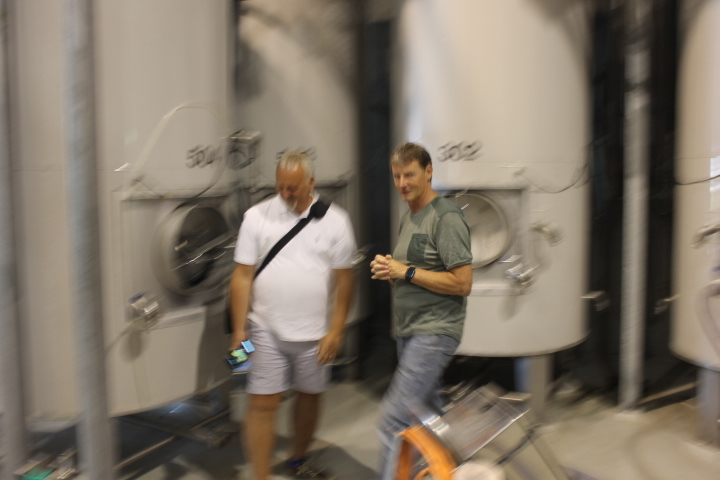
On the white wine side, we have tanks of various sizes, insulated, and we also use some large format oak for fermentation – Sauvignon Blanc – we make a wine called Paper Nautilus which is our alternative style. Large format oak cuves give a more textural wine.
In New Zealand terms, we’re large enough to be well equipped, but small enough to be nimble. Someone is here 24 hours a day, but we don’t have to harvest 24 hours a day. We machine pick at night – between 6pm and 3am. We can peel off a hundred tonne and we’ve two presses and two tipping tanks; and then it takes us the rest of the time in the 24 hour cycle to deal with it all. Then we start again for the next cycle. At that scale we’ve got a bit more option to stop/start.
WF: What’s happening in the winery this week?
CJ: At the moment we are racking our first 2020 juice. We actually picked some grapes last week for our Vintage Rosé; so that’s Pinot Noir picked for sparkling wine. We hand pick and chill all the fruit overnight. Normally for a sparkling wine we would whole bunch press.
But because this is for Vintage Rosé we give it a bit of a bash. Destem it; crack the skins, release a bit of colour. It’s from our indicator block that’s always at least a week ahead of everything else. It’s a mark in the sand and by the end of today we’ll have our first 2020 ferment under way. We’re getting the last few tanks emptied before we fill the place up!
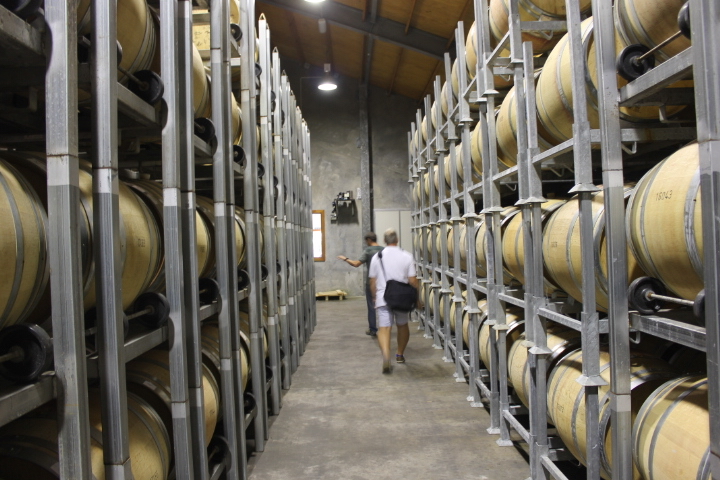
WF: Has it helped to be at a point in time where the use of science and technology has helped you, and the NZ wine industry, get a good head start?
CJ: When we set up the winery we took advantage of the technology available to us – we have those tipping tanks for example, that saves us time and effort. We’re also very collaborative and willing to share knowledge with colleagues. We had the first significant-sized and fully automated cross-flow filter that came into the country; and it’s a ceramic cross-flow compared to a polymeric. We went for a high degree of automation but a relatively low capacity. But one of those big tanks out there – we can connect this thing up at 4 o’clock on a Friday and come in on Monday morning – and it’s filtered. Zero labour.
And we’ve only had the Fire Brigade out once!
It’ll filter a certain amount of wine, and then it will stop and give itself a clean, with an automatic CRP system. It’s a hot wash and there’s various control valves. It obviously closed the valve a bit quickly and the pressure in the hot water cylinder blew the hose off. So the hot water cylinder’s drained all over the floor and the steam has set the fire alarm off.
Fire Brigade arrived. So I got a call – just gone to bed. Volunteer Firefighter – Karl, who’d worked vintage with us – tells me it’s the crossflow filter. I said “Mate, can you put it on pause and turn the lights out and I’ll sort it out in the morning!”
WF: Did you get anything with the earthquake?
CJ: A few of the big tanks were compromised and we had to get things strengthened. About half the bungs were out of the barrels but we didn’t lose any wine, apart from some pallets of wine, in warehouses. You can see marks on the floor, where some of the barrel racks have jiggled about a bit. We were lucky we’d already moved over to the earthquake-rated racks.
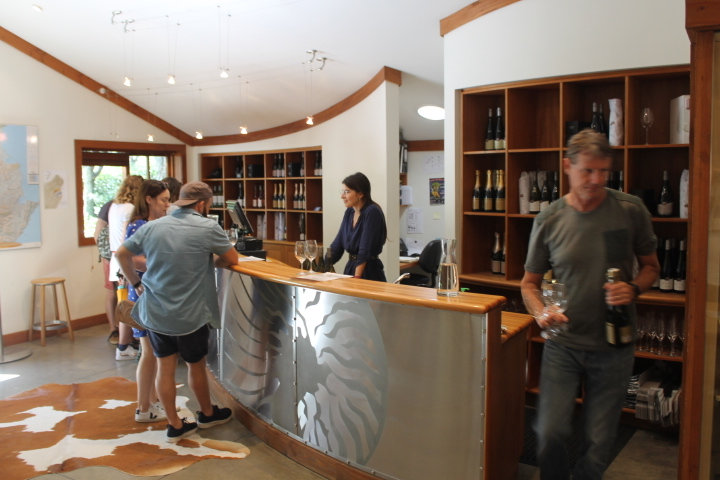
WF: What do you think the New Zealand wine drinking public knows you best for?
CJ: The Nautilus Brut NV is probably our most well-known wine domestically. We sell a little bit in the export markets. Been making this since ’91 and one distinguishing characteristic is that it’s a Pinot-dominant blend. Three quarters Pinot, one quarter Chardonnay; whereas most New Zealand sparkling are either Chardonnay-dominant like Pelorus, or a lower percentage of Pinot like Quartz Reef which I think is 60-40. That’s always been our house style.
It’s non-vintage and has a relatively small amount of reserve wine in it. For a non-vintage, it has a long time on yeast lees, so a minimum of 36 months.
The Pinot gives it richness and structure; the long time on yeast less gives it that bread and brioche character; and it’s relatively dry too. We do put the bottling date, and the disgorging date on the label. We are part of Appellation Marlborough, and Methode Marlborough – a group of all the producers that have a sparkling wine making it in the traditional method.
WF: How about in terms of matching Champagne?
CJ: We think we’re pretty close but in the marketplace – in the UK – the NV would sell for maybe £20-25, so you could certainly buy a champagne for that. You are very much competing against that. At a similar price point, we would be the superior wine. Once people start tasting champagne versus New Zealand Methode, they will see it holds it’s own.
WF: I’m pretty sure I tried a rather fabulous glass of pink bubbles last Christmas from Nautilus?
CJ: That is our second sparkling wine; and when we looked to introduce this to the portfolio, it didn’t make sense to do a ‘Blanc de Blanc’ as we are a Pinot house. So we said, let’s do a 100% Pinot, Vintage Rosé – pink is in. We only make a couple of hundred cases. It’s vintage – 2016, so 30 months on yeast lees. We disgorge it six months prior to Christmas, so it’s hitting that Christmas market at an optimum time. It’s really only domestic.
WF: I see you are a sponsor of the arts – the Royal New Zealand Ballet.. do you see winemaking as a science or an art?
CJ: Some described to me recently that “Winemaking is more a craft” – rather than science or art, it’s craft. You’ve got to get the fundamentals right, then your artistic interpretation can come over the top of that. And it is your interpretation and that is where the creativity comes in.
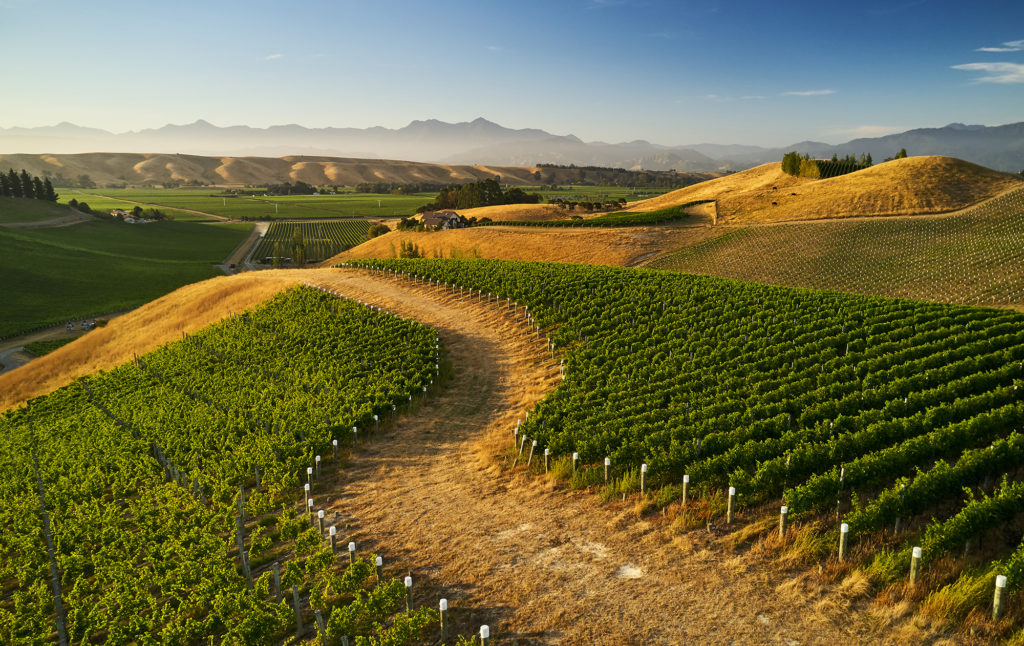
WF: can you tell me a bit more about your Pinot Noir?
CJ: Southern Valleys is where we think, in Marlborough, the premium Pinot is coming from. It’s a story that we think if we don’t tell people, then no-one is going to know about it. Marlborough is essentially three valleys – Awatere to the south; the Wairau Valley we kind of carved in half – the old valley floor – the flood plain of the Wairau River which is between here and Renwick where Mahi is. The cliffs up behind there – technically is could be called Southern Hills. A higher terrace with more silt and clay in the soils. It’s about the aspect and the soil type – not the elevation. Off the clay soils in Marlborough we get that fruit sweetness and really fine grained tannins. We focus on two hillside vineyards for our premium Pinot. It’s got delicacy, elegance and finesse and, to me, that’s what Pinot should be. It’s essentially our Estate Blend, labelled as Southern Valleys.
Most of that wine comes off our Clay Hills vineyard, which is our 100% Pinot vineyard in the Southern Valleys, and since 2014 we’ve released a single vineyard wine off that vineyard. We got to the point where if you’re a serious Pinot producer you’ve got to have a single vineyard conversation.
A little bit more whole bunch influence – in the last nine years we’ve increased our use of whole bunch within our blend, but driven by what we’re doing in these wines. For us it’s the thing that has taken our Pinot from something relatively simple and fruit-driven to more richness and complexity.
We think we know where and how to grow Pinot in Marlborough, and we’ve got enough vine age that it’s starting to make a difference. We think we’re producing some real kick-arse wines in Marlborough. They’re as good as any in the country.

